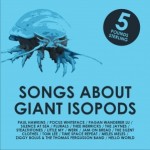Besides the typical divisions we make for deep-sea habitats based on depth, it is important to note that the deep sea is not a homogenous landscape. Rather a variety of unique habitats, each with a specialized set of organisms, create a mosaic across the seafloor.
- 1. Soft-bottom benthos is the largest habitat and comprises those areas generally characterized by ‘soft’ sediments of silt, clay, or biogenic ooze. A variety of factors (disturbance from seafloor storms and erratic currents, patchiness in food input, sediment type, and depth) can lead to a further subset of micro- and macrohabitat types each with unique species that may contribute to the high species diversity of the deep sea.
- 2. Hard-bottom habitats are those areas with exposed rock outcrops. They are thought to be relatively uncommon, but recent hydrographic surveys show that rock can occur on continental shelves and potentially be prevalent. These patches can host unique communities different from the surrounding soft bottom communities.
- 3. Hydrothermal vents were discovered in 1976 in deep waters near the Galapagos Islands. Almost 30 years and 2000 scientific publications later vents are known from nearly every part of the sea floor where oceanic ridge spreading is identified to occur. Hydrothermal vents arise from ruptures in the newly created basalt along mid-oceanic ridges. These fractures allow the surrounding cold water to penetrate the crust (2-3km) and mix with hot basalt. This mixture emerges through three distinct hot spring types on the seafloor. In some cases the liquid simply emerges through a crack or crevice at temperatures ranging from 5-250˚C. In other areas, the vent liquid emerges through chimney structures formed from precipitated minerals that collect due to the surrounding low temperature and extreme pressure. These can be either black smokers (270-380˚C) or white smokers in which the vent liquid escapes as cloudy plume at slightly cooler temperatures.
- 4. Seep communities are areas with seafloor emission of dissolved reducing substances and are usually characterized by how and where the seepage occurs. In the Gulf of Mexico seeps are common. Methane may form a solid hydrate that is burrowed by polychaete worms, simply saturate the soil forming a bacterial mat, or bubble out in mud pits. The fauna is composed of speacilized polychate worms and bivalve clams that have affinities to those found on whale falls and hydrothermal vents.
- 5. Seamounts have received much attention lately through conservation efforts. Most of the seafloor is covered with submerged mountains (more than 14,000 worldwide). They contain a unique set of current regimes that often lead to dense aggregations of deep-water corals. Large populations of fish, some commercially important, are also found here. The degree to which species are endemic, only found on seamounts, is still heavily debated.
- 6. Trenches have equally unique set of current regimes. One of the most important aspects of trenches is their funneling affect that concentrates food at the trench bottom leading to higher biomass and abundance of organisms. The deepest of these is Mariana’s Trench near Guam at ~11,000m.
- 7. Oxygen minimum zones are noted by persistent low oxygen (0.5ml/l (or about 7.5% saturation; 22 M) and are present at different water depths ranging from shelf to upper bathyal zones (10-1300 m). The oxygen depletion is created by the respiration of organisms.
- 8. Brine lakes occur in the Mediterranean Sea and the Gulf of Mexico where hypersaline water bodies have formed from the dissolution of rock. Because of the density of the brine, they do not mix with the surrounding water. These habitats like oxygen minimum zones lack are hypoxic but still possess an array of microbial life. Habitats along the perimeter are often dominated by mussel beds. These environments have only recently attracted attention.
- 9. Large food falls occur sporadically across the deep-sea floor. These may include parcels of terrestrial plants (trees), marine plants (algae), or fish and marine mammals. Each of the communities attracts an opportunistic set of species that aggregate at the fall such as wood boring bivalves on wood parcels. The largest of the food falls are whale falls. They contain some related/similar species to vents and seeps but also contain many unique species that possess a variety of adaptations to maximize the carcass. As the food fall ages the community of organisms there also changes through several successional stages.
-
10. Pelagic habitats are also important and often divided by depth zones or temperature changes.
Share the post "ARCHIVE: 25 Things You Should Know About the Deep Sea: #9 The Deep-Sea Contains A Variety of Habitats"




